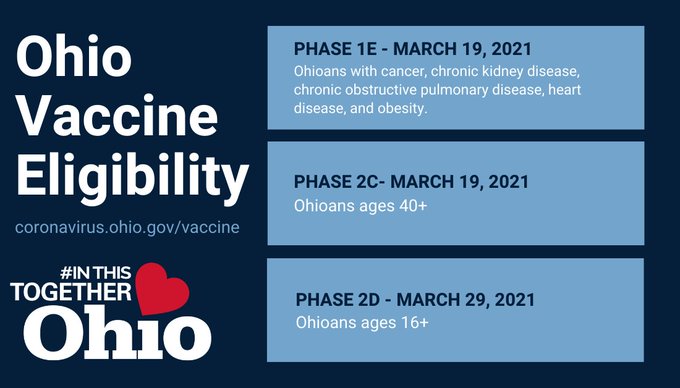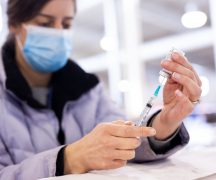Ohio got two more pieces of hopeful news about the coronavirus Tuesday.
Gov. Mike DeWine announced that because of rapidly expanding supplies of the vaccine, all Ohioans 16 and over will be eligible to get a shot by the end of March. At the same time, the percentages of residents already eligible for the vaccine are showing marked improvement after weeks of slow growth.
Increased production of the first two vaccines to be used in the United States and the approval of a third have tripled the number of weekly doses flowing into the state from early February. Growing supplies prompted DeWine to make his Tuesday morning announcement.

As part of it, Ohioans over 40 and those with cancer, chronic kidney disease, chronic obstructive pulmonary disease, heart disease and obesity will be eligible for the vaccine starting Friday. Those over 16 will be eligible starting March 29.
At the same time, the percentages of already-eligible Ohioans getting the vaccine are improving.
That’s important because high levels of vaccination would lead to herd immunity. That would deny the virus a foothold to continue to spread and mutate into more dangerous, vaccine-resistant variants.
Over the past month, DeWine acknowledged that the portion of people accepting the vaccine reached 50% and then slowed to a crawl as it approached 60%. He hopefully speculated that part of the problem might have to do with February’s terrible weather.
Turns out he might have been right. Ohioans 65 and over have been eligible for the vaccine for more than a month. The percentages of those receiving at least a first dose last Tuesday compared to today:
- 80 and over — 65% vs 68%
- 75-79 — 62% vs 66%
- 70-74 — 59% vs 65%
- 65-69 — 48% vs 56%
Overall, 20% of Ohioans have received at least a first dose of a vaccine. Public health experts say between 70% and 80% of a population need to be immune to protect the herd.
Still unknown is how much natural immunity is conferred from a coronavirus infection or how long that immunity lasts. Also unknown is the extent to which people who have been vaccinated can still carry and spread the virus.
There’s been some quibbling over who deserves credit for the rapidly expanding supply of vaccines, which hopefully will end the covid nightmare the state has been living with for almost exactly a year.
Development and approval of the first two vaccines took place under the administration of former President Donald Trump. It was done far more quickly than any previous vaccine and more quickly than public officials dared hope.
But there were also problems. Despite a slow rollout, Trump’s surgeon general, Jerome Adams, in December said that the administration would not invoke the Defense Production Act to speed production of the Pfizer and Moderna vaccines, which already had been approved.
When he ascended to the presidency on Jan. 20, Joe Biden used the production act to rapidly increase production and took other steps to ensure an increasing, predictable supply to states. He also was publicly vaccinated (Trump and his wife were vaccinated in secret) and undertook a public campaign to get people to wear masks and to show them that the vaccine is safe.
Then, when the single-dose Johnson & Johnson vaccine was approved, Biden again deployed the Defense Production Act, brokering a deal between that company and a competitor, Merck, to dramatically increase production.





